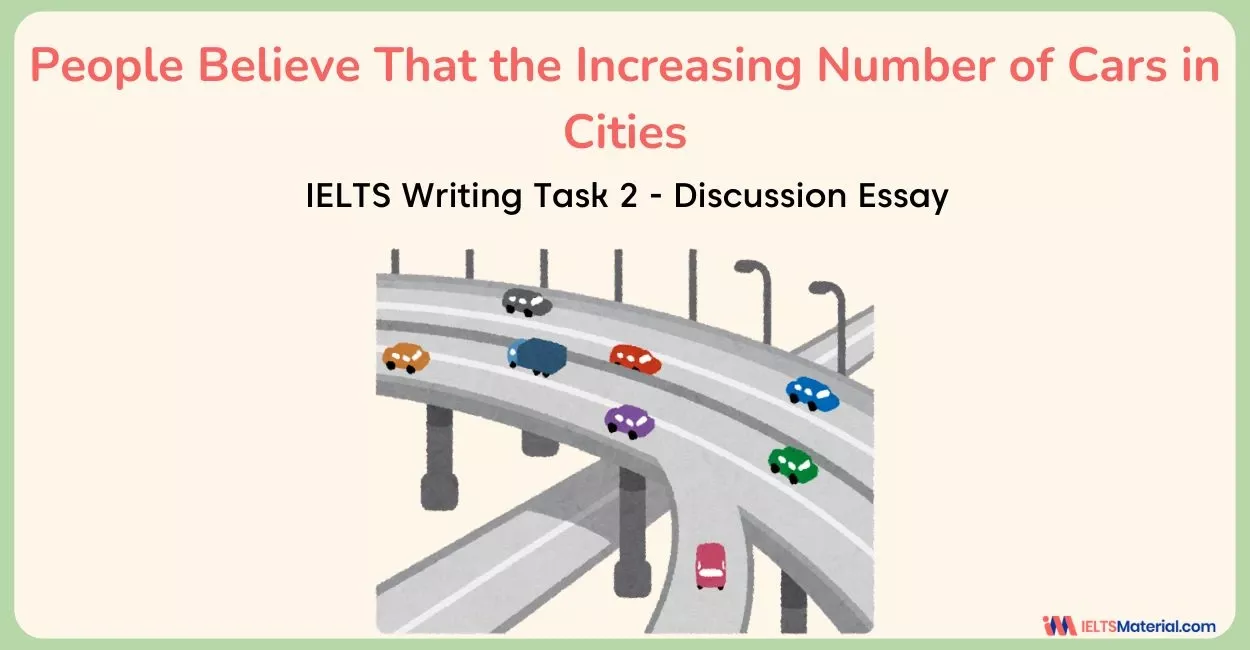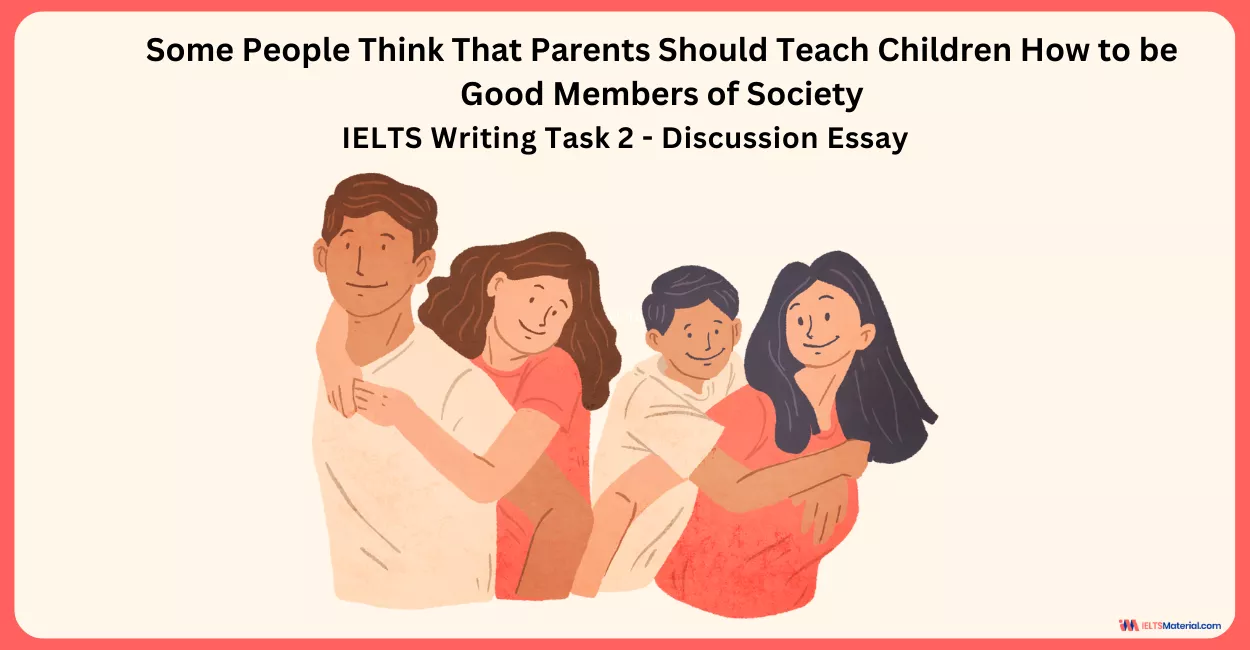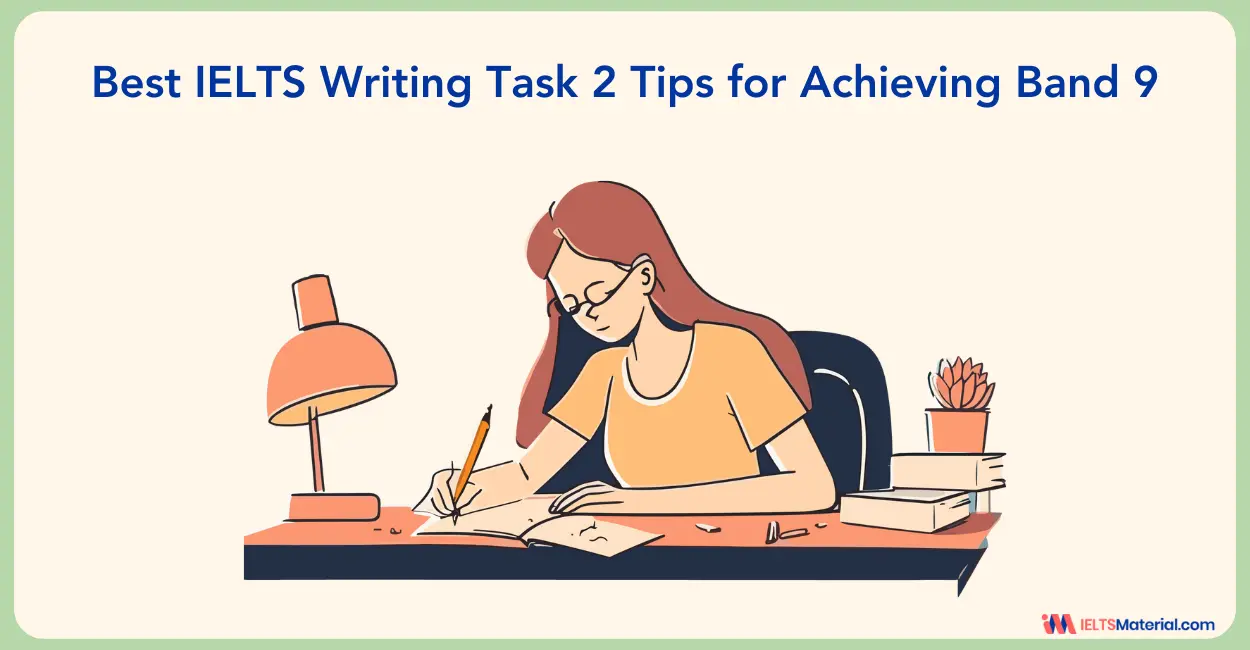How to Write an IELTS Discussion Essay? | IELTS Discussion Essay Topics
Want to achieve Band 8+ in IELTS Writing Task 2? Master the art of writing high-scoring discussion essays with expert planning strategies, a well-structured approach, common mistake corrections, and model sample answers to boost your score!
Table of Contents
- How to Plan an IELTS Discussion Essay?
- Structure of an IELTS Writing Task 2 Discussion Essay
- 3 Common Mistakes in IELTS Discussion Essay
- Tips to Write an IELTS Discussion Essay
- Sample IELTS Discussion Essay Topics & Sample Answers
- IELTS Discussion Essay Topic: Sample Answer 1
- IELTS Discussion Essay Topic: Sample Answer 2
- IELTS Discussion Essay Topic: Sample Answer 3
- Here are the 10 IELTS Discussion Essay Examples:
- Check Other Writing Task 2 Essays:

Try AI Essay Checker for Instant Band Score
In the IELTS Writing Task 2, the discussion essays require you to explore both sides of an argument and express your opinion. These essays test your ability to present a balanced perspective while maintaining coherence and clarity.
You have 40 minutes to complete this task and must write at least 250 words. In this guide, we will walk you through the structure, common mistakes, and expert tips to help you achieve a Band 8+ in your discussion essay.
How to Plan an IELTS Discussion Essay?
There are a few key things to keep in mind when writing a discussion essay:
- Identify the two opposing views.
First, read the statement carefully and find the two opposing views. Then, think about how to support each one.
- Gather evidence to support both sides.
Once you know what the two opposing views are, you need to gather evidence to support each one.
This evidence can come from your own knowledge, experience, or research.
- Write a clear and organized essay.
Your essay should have a clear introduction, body paragraphs, and conclusion.
- Start with an Introduction
Begin your essay with a clear introduction that tells the reader what the topic is and what your main points will be. Keep it simple and to the point. You might find some tips to write an effective introduction for IELTS Writing Task 2 below.
- Use Paragraphs
Break your essay into two paragraphs, with each one focusing on a different point. Start each paragraph with a topic sentence that tells the reader what the paragraph is about.
- Give Examples
Use examples to support your points. This could be something you’ve read about, something you’ve seen, or something from your own experience.
Get your hands on 2024’s latest IELTS Writing Task 2 test papers! Grab now!
Structure of an IELTS Writing Task 2 Discussion Essay
Introduction
Body Paragraph 1
Body Paragraph 2
Conclusion
|
3 Common Mistakes in IELTS Discussion Essay
Let us look at the three errors that are usually common in IELTS discussion essays.
- Imbalanced Discussion
Focusing too much on one viewpoint and neglecting the other, or failing to discuss both views equally.
- Weak Supporting Evidence
Using irrelevant examples, statistics, or facts to support your points in the body paragraphs.
- Overgeneralization
Making broad statements without providing specific examples or evidence to back them up.
Never repeat these errors in your next IELTS discussion essay! Sign up for a FREE demo now!
Tips to Write an IELTS Discussion Essay
Since we’ve had a look at the three most common errors that might occur while you write an IELTS discussion essay, now let’s learn a few expert tips you can use to practice while writing them!
-
Use Neutral Language: Maintain an unbiased tone while presenting both perspectives.
-
Plan Before Writing: Jot down key points and structure your essay before you start.
-
Use Linking Words: Enhance readability with transition words like on the one hand, on the other hand, in conclusion.
-
Provide Evidence: Support your arguments with logical examples and real-world applications.
-
Proofread Your Essay: Check for grammatical errors, spelling mistakes, and clarity before submitting.
We’ve collected a list of connectors/linking words for writing to present in your IELTS discussion essays. Have a look at them in the following table:
| Body Paragraph 1 | Body Paragraph 2 | Conclusion |
| Firstly | Additionally | In conclusion |
| To begin with | Moreover | To sum up |
| Initially | Furthermore | To conclude |
| Nowadays | In addition | In summary |
| On the one hand | On the other hand | Finally |
- Use evidence to support your claims: When writing supporting points in your body paragraphs, be sure to provide evidence as an example to support it. This can come from your knowledge, experience, or research.
- Proofread your essay carefully: Before you finish, take a few minutes to read over your essay and make sure there are no mistakes in spelling, grammar, or punctuation.
Sample IELTS Discussion Essay Topics & Sample Answers
Here are a few sample IELTS Writing Task 2 discussion essays topics with questions and their answers that will help you get an idea of how to achieve your desired IELTS band score.
IELTS Discussion Essay Topic: Sample Answer 1
Some people believe that it is essential to learn a foreign language in school, while others believe that it is not necessary. Discuss both views and give your opinion.
Breakdown
Introduction: The introduction sets the stage for the essay by presenting the topic and highlighting the opposing viewpoints.
Body Paragraph 1: This paragraph discusses the advantages of learning a foreign language, including cognitive, cultural, and practical benefits.
Body Paragraph 2: The second paragraph presents the counterargument that learning a foreign language is unnecessary due to technology and the prominence of English.
Conclusion: The conclusion provides a clear personal opinion that acknowledges the counterarguments but asserts that the benefits of foreign language learning are more significant.
Final Compilation of IELTS Discussion Essay
Learning a foreign language has been a topic of debate in educational circles, with proponents arguing its importance and opponents asserting its insignificance. Those who advocate for learning a foreign language in school argue that it has numerous cognitive, cultural, and practical benefits. Firstly, mastering another language enhances cognitive abilities, as it requires learners to think critically and adapt to different linguistic structures. Moreover, it promotes cultural understanding by allowing individuals to communicate with people from diverse backgrounds, fostering tolerance and open-mindedness. From a practical standpoint, in today’s globalized world, proficiency in a foreign language can boost job prospects and facilitate international interactions.
On the other hand, there are those who contend that learning a foreign language is unnecessary in the modern age due to the prevalence of translation tools and the predominance of English as a global lingua franca. They argue that the time spent on language acquisition could be better utilized for other subjects that are more directly applicable to students’ future careers. Additionally, some assert that the difficulty of becoming truly proficient in a foreign language often discourages students and leads to frustration.
To conclude, while the concerns raised against learning a foreign language hold some validity, the advantages far outweigh the drawbacks. The cognitive and cultural benefits of language learning are substantial and contribute not only to personal growth but also to building a more interconnected and harmonious society. Moreover, even though technology can aid in translation, it cannot replace the nuanced understanding and genuine human connections that result from speaking someone’s native language. Therefore, incorporating foreign language learning into the curriculum remains a valuable investment in students’ holistic development.
IELTS Discussion Essay Topic: Sample Answer 2
Some people believe that it is better to live in a city, while others believe that it is better to live in the countryside. Discuss both views and give your opinion.
Breakdown
Introduction: Introduces the topic and mentions the opposing views regarding city and countryside living.
Body Paragraph 1: Discusses the advantages of living in a city, including access to amenities, job opportunities, and cultural activities.
Body Paragraph 2: Presents the benefits of living in the countryside, such as tranquillity, connection to nature, and strong communities.
Conclusion: Offers a personal perspective that acknowledges the strengths of both options and suggests that the choice should be based on individual preferences.
Final Compilation of IELTS Discussion Essay
Living preferences between urban and rural areas have long been a subject of debate. Supporters of city living argue that it offers greater access to amenities, career opportunities, and cultural activities. Cities are often hubs of economic activity, providing a wide range of job options and higher earning potential. Additionally, urban dwellers can enjoy a plethora of entertainment choices, from theatres and museums to restaurants and shopping centres.
On the other hand, proponents of rural living emphasize the tranquility and connection to nature that the countryside provides. They contend that life in the countryside is less stressful, offering cleaner air, less noise pollution, and a slower pace of life. Moreover, the close-knit communities in rural areas foster a sense of belonging and interpersonal relationships that can be harder to find in bustling cities.
To conclude, in my opinion, both living environments have their merits, and the choice depends on individual preferences and priorities. While cities offer convenience and a vibrant social scene, they can also be overwhelming and stressful. On the contrary, the countryside provides a peaceful and close-to-nature existence, but it might lack the opportunities and amenities that cities offer. Therefore, the ideal choice should be based on a person’s lifestyle, values, and career aspirations.
Enroll in our FREE online webinars to learn how to write band 9 IELTS Discussion Essay Topics!
IELTS Discussion Essay Topic: Sample Answer 3
Some people believe that social media has a negative impact on society, while others believe that it has a positive effect. Discuss both views and give your opinion.
Breakdown
Introduction: Introduces the topic and states that social media’s impact on society is debated.
Body Paragraph 1: Discusses the negative effects of social media, including impacts on mental health, privacy, and interpersonal relationships.
Body Paragraph 2: Presents the positive aspects of social media, focusing on connectivity, activism, information sharing, and education.
Conclusion: Offers a personal perspective that acknowledges both sides of the argument but emphasizes the potential positive impact of responsible social media use.
Final Compilation of IELTS Discussion Essay
The influence of social media on society is a topic of ongoing debate. Detractors argue that social media has detrimental effects on mental health, privacy, and interpersonal relationships. They claim that the constant comparison to curated online personas can lead to feelings of inadequacy and anxiety. Furthermore, the erosion of privacy due to the widespread sharing of personal information and the rise of cyberbullying are serious concerns. Critics also point out that excessive screen time detracts from face-to-face interactions, potentially weakening real-life connections.
On the other hand, proponents of social media contend that it fosters global connectivity, information sharing, and activism. Platforms like Twitter and Instagram enable individuals to voice their opinions, raise awareness about important issues, and create positive change. Social media has played a pivotal role in various social movements and humanitarian efforts, mobilizing people on a scale previously unattainable. Additionally, it allows easy access to a wide range of educational content and facilitates networking opportunities.
In conclusion, while social media has its drawbacks, its potential positive impact is significant. The power of social media to amplify voices, disseminate information, and drive social change cannot be overlooked. However, its usage should be balanced and responsible, with individuals and society collectively addressing its negative aspects, such as online toxicity and privacy concerns.
Have an essay on the given IELTS discussion essay topics? Great! Send them in for FREE Evaluation!
Here are the 10 IELTS Discussion Essay Examples:
Following are the examples of IELTS Discussion Essay Topics:
- IELTS Discussion Essay Example 1
- IELTS Discussion Essay Example 2
- IELTS Discussion Essay Example 3
- IELTS Discussion Essay Example 4
- IELTS Discussion Essay Example 5
- IELTS Discussion Essay Example 6
- IELTS Discussion Essay Example 7
- IELTS Discussion Essay Example 8
- IELTS Discussion Essay Example 9
- IELTS Discussion Essay Example 10
Take your time to understand this lesson well and keep practising IELTS discussion essays using past and latest exam questions as much as you need. Constant practice is the best way to get better at it. Way to go!
If you are preparing for the IELTS Writing exam, we would recommend you practice tasks like the above-given questions regularly. The more you practice, the better you will become at cracking the writing tasks for IELTS within the dedicated timeframe.
Join our IELTS preparation online classes and get personalized feedback! Sign Up for a FREE demo today!
Check Other Writing Task 2 Essays:
- Some people are born with certain talents – IELTS Writing Task 2
- Discipline is An Ever-Increasing Problem in Modern Schools Writing Task 2
- Some People Think Governments Should Spend Money- IELTS Writing Task 2
- Obesity is a Serious Problem in Many Countries- IELTS Writing Task 2
Also Check:
Frequently Asked Questions
When should I give my opinion in an IELTS discussion essay?
Are Opinion essays and Discussion essays the same?
How do you discuss both views and give your opinion?
What are the major mistakes test takers do in the IELTS Discussion essays?
How to write the IELTS Discussion Essay?
Practice IELTS Writing Task 2 based on Essay types

Start Preparing for IELTS: Get Your 10-Day Study Plan Today!
Explore other Discussion Essays



Recent Articles

Haniya Yashfeen


Prity Mallick

Kasturika Samanta





Post your Comments
2 Comments